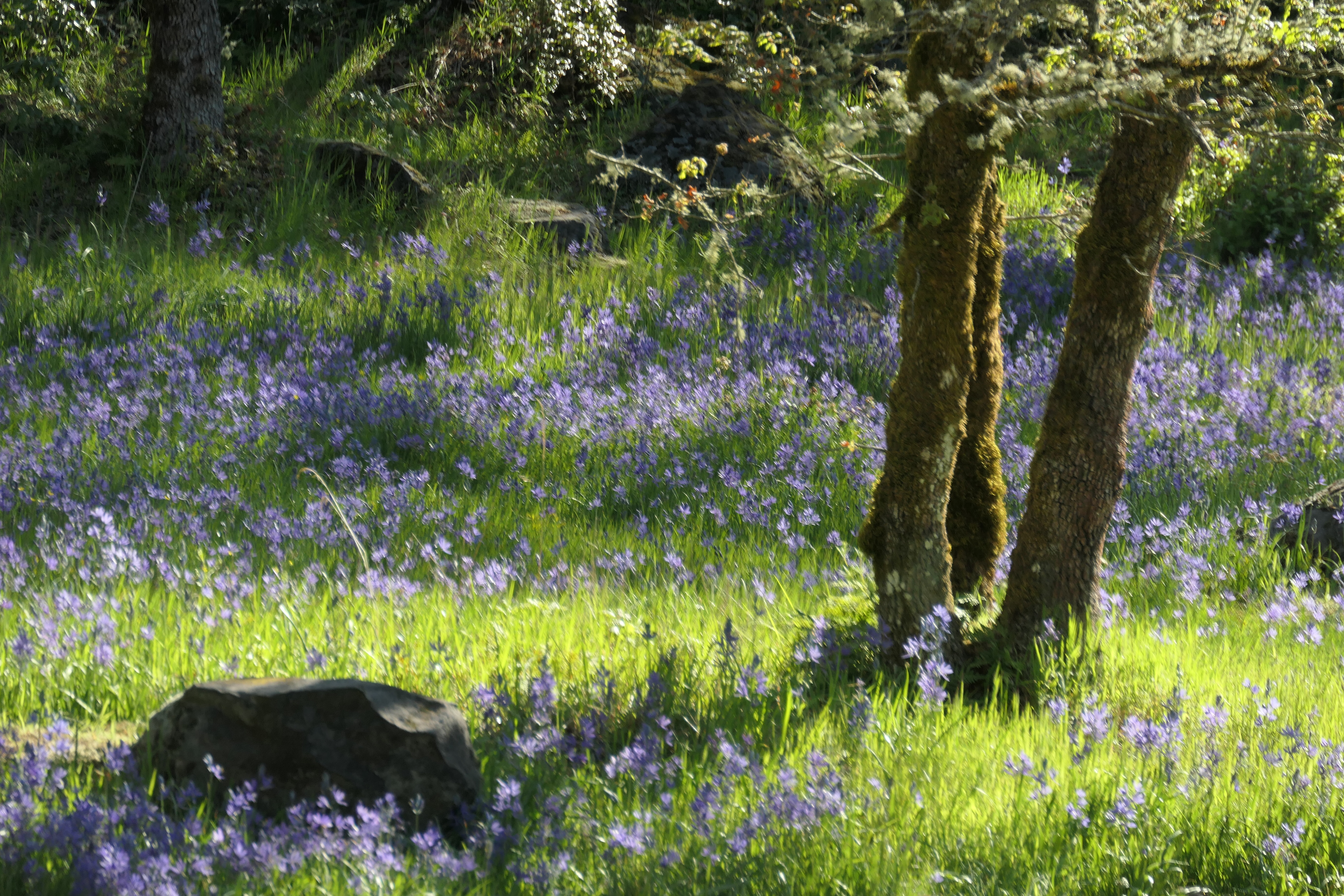If you need a treat for the eyes, or, for that matter, the soul, I recommend a short outing to Camassia Natural Area which is protected by the Nature Conservancy. The small park, a 15 minute drive from PDX, is at the height of its beauty at this time of the year, when the Camassia bloom as do the blue-eyed Mary’s, an endangered plant of the snapdragon family.


Camassia, also known as Indian hyacinths or squamash, covered large areas of the Northwest before live stock, White settlers and eventually the construction of villages, towns and cities took over. When Lewis & Clark traveled here the meadows reminded them of large swaths of water, in waving blue.

If you click on his description, you’ll get an exquisite botanical description and report on native usage, particularly using the bulbs from this plant from the asparagus family as nutrition.
Many NW place names, like Camas, WA, were derived from the plant which played a substantial role in the diet of Northwest Indian tribes. As migratory foragers they would travel in seasonal rounds, according to where the abundant food was to be found at a given time of year (hence the need for large territories). This migration followed a predictable pattern from permanent winter villages through several temporary camps, nearly always returning to the same locations each year. Before construction of The Dalles Dam in 1957, which flooded this area, Celilo Falls for example was a favored location to fish for salmon on the Columbia River. For starch they relied heavily on q’emes or camas root (Camassia quamash) as a food source; it was gathered in the region between the Salmon and Clearwater river drainages.

Here is a way to prepare the bulbs, if you have the patience….
In fact, you could have a whole meal from the plants you find at Camassia Nature preserve. Camassia as your main dish,

miner’s lettuce for your salad,

sprinkled with alyssum,

accompanied by cucumbers,

and for desert you can suck honey from the Rosy Plectritis (from the honey suckle family)


or have some wild strawberries.

And should you scrape your knee while getting off that picnic blanket – there is always saxifrage to the rescue, with its antiseptic and healing properties.


And if you need a nice glass of milk to go with all of this and your cow has udder problems, the nipplewort, also prolific in the area, will come to your rescue:
The name itself has an interesting history that originated around 350 years ago when an Englishman by the name of John Parkinson named the plant after he heard that it was useful for topical treatment of ulcers for women on certain areas of their bodies. It was also an herbal treatment for nursing mothers, and was used to aid cows and goats that were having trouble being milked. Another source of the name is said to have come from the shape of the basal lobes and their resembling features. Because nipplewort is edible, its leaves can be cooked like spinach or served raw in only the most hipster of salads.
Guten Appetit!
And here is César Frank on another edible: Angels’ Bread….






Steve T.
Friderike, that music brought tears. Incredibly beautiful. The flowers are beautiful, but that music!
Lee Musgrave
Wonderful, pleasant and enjoyable presentation.
Patrick Burrowes
Your saxifrage is actually a picture of a plantain plant It does have antiseptic qualities tho
friderikeheuer@gmail.com
Live and learn! Thanks for the heads up.